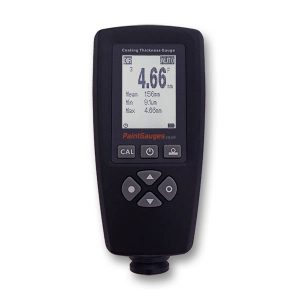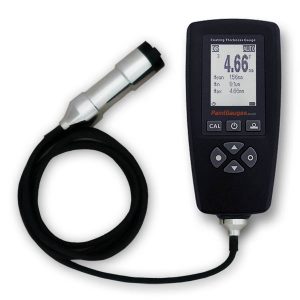Intumescent paints applied to structural steel are important in terms fire protection. Such paints are designed to swell on exposure to heat, to expand to many times the original coating thickness. There are various standards that relate to intumescent paints including EN 13381-8 in respect of structural steel.
Irrespective of whether an intumescent paint is solvent based or water based, the thickness of both types can be measured by our coating thickness gauges.
Checking thickness of intumescent paint is important
The thickness of intumescent paint is important to its fire protection characteristics.
Consequently, from a safety perspective it is important to ensure that the coating is applied to the relevant thickness specifications and consistently across a surface. Application methods for intumescent paints can vary, including by brush, airless spray, or roller. The technique used can lead to variations in coating thickness.
Checking the paint thickness is thus important from a quality control perspective. In order to do this, measurement of the dried paint is necessary. This can be performed by measuring the dry film thickness using non-destructive test equipment, specifically a coating thickness gauge.
Intumscent paint tends to be applied more thickly
Intumescent paint tends to be applied as a thicker coating than many other types of painted coating, such as automotive paints. For this reason, a coating thickness gauge with a high measurement range is required.
Our FN Max Paint Thickness Gauge has a very high upper measurement limit of 5,000µm (5mm) on ferrous metals, such as steel. This is significantly higher than models with a 1,250µm (1.25mm) upper measurement limit, such as the FN Evo. Given intumescent paint is often applied at thicknesses greater than 1,250µm we recommend the FN Max model for use in such applications. Even is a current project happens to specify intumescent paint to be applied below 1,250µm thick, a future project may well require a thicker coating.
-
 FN Max Coating Thickness Gauge£329.99
FN Max Coating Thickness Gauge£329.99 -
 FN Max Ext Coating Thickness Gauge£379.99
FN Max Ext Coating Thickness Gauge£379.99
